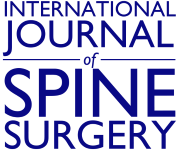Abstract
Background Sacroiliac (SI) joint fusion is increasingly used to treat chronic SI joint pain. Multiple surgical approaches are now available.
Methods Data abstraction and random effects meta-analysis of safety and efficacy outcomes from published patient cohorts. Patient-reported outcomes (PROs) and safety measures were stratified by surgical technique: transiliac, including lateral transiliac (LTI) and posterolateral transiliac (PLTI), and posterior interpositional (PI) procedures.
Results Fifty-seven cohorts of 2851 patients were identified, including 43 cohorts (2126 patients) for LTI, 6 cohorts (228 patients) for PLTI, and 8 cohorts (497 patients) for PI procedures. Randomized trials were only available for LTI. PROs were available for pain (numeric rating scale) in 57 cohorts (2851 patients) and disability (Oswestry Disability Index [ODI]) in 37 cohorts (1978 patients).
All studies with PROs showed improvement from baseline after surgery. Meta-analytic improvements in pain scores were highest for LTI (4.8 points [0–10 scale]), slightly lower for PLTI (4.2 points), and lowest for PI procedures (3.8 points, P = 0.1533). Mean improvements in ODI scores were highest for LTI (25.9 points), lowest for PLTI procedures (6.8 points), and intermediate for PI (16.3 points, P = 0.0095).
For safety outcomes, acute symptomatic implant malposition was 0.43% for LTI, 0% for PLTI, and 0.2% for PI procedures. Wound infection was reported in 0.15% of LTI, 0% of PLTI, and 0% of PI procedures. Bleeding requiring surgical intervention was reported in 0.04% of LTI procedures and not reported for PLTI or PI. Breakage and migration were not reported for any device. Radiographic imaging evaluation reporting implant placement accuracy and fusion was only available for LTI.
Discussion Literature support for SI joint fusion is growing. The LTI procedure contains the largest body of available evidence and shows the largest improvements in pain and ODI. Only LTI procedures have independent radiographic evidence of fusion and implant placement. The adverse event rate for all procedures was low.
Level of Evidence 1.
Footnotes
Funding The authors received no financial support for the research, authorship, and/or publication of this article.
Declaration of Conflicting Interests Three authors are employees of a device manufacturer whose implant is included in the systematic review, 5 authors are consultants for various implant manufacturers included in this paper.
Disclosures P.W. reports grants/contracts from Bioventus and OssDsign; consulting fees from SI-BONE, Bioventus, Boston Scientific, Medtronic, Orthofix, and Stryker; speakers bureau for SI-BONE, Medtronic, Orthofix, and Stryker; Advisory Boards for Centinel Spine, Cerapedics, Empirical Spine, NuVasive, Providence Medical Technologies, and OssDsign. V.P. reports consulting fees from DePuy Synthes, Mainstay Medical, Zimmer, Stryker, Medtronic, Aesculap, Spine Welding AG, Orthobond, J&J, Baxter, and SI-BONE, Inc. B.D. reports consulting from SI-BONE, Inc. and Intrinsic Therapeutics. B.S. reports consulting from SI-BONE and SRL. DC, CR, and RC are employees of SI-BONE, Inc. D.P. reports consulting from Globus, SI-BONE, and Alexion and royalties from SI-BONE.
- This manuscript is generously published free of charge by ISASS, the International Society for the Advancement of Spine Surgery. Copyright © 2023 ISASS. To see more or order reprints or permissions, see http://ijssurgery.com.






